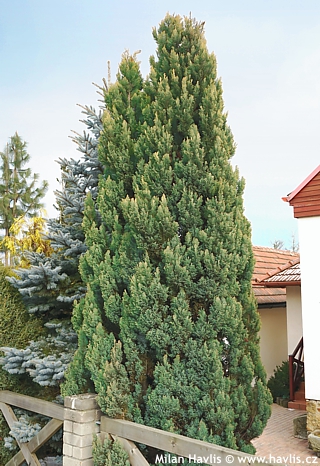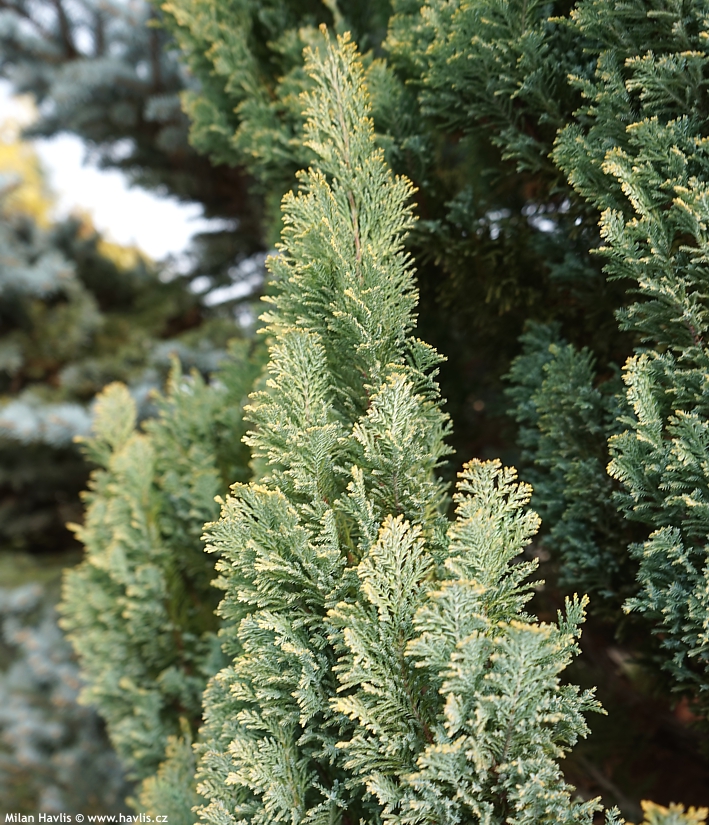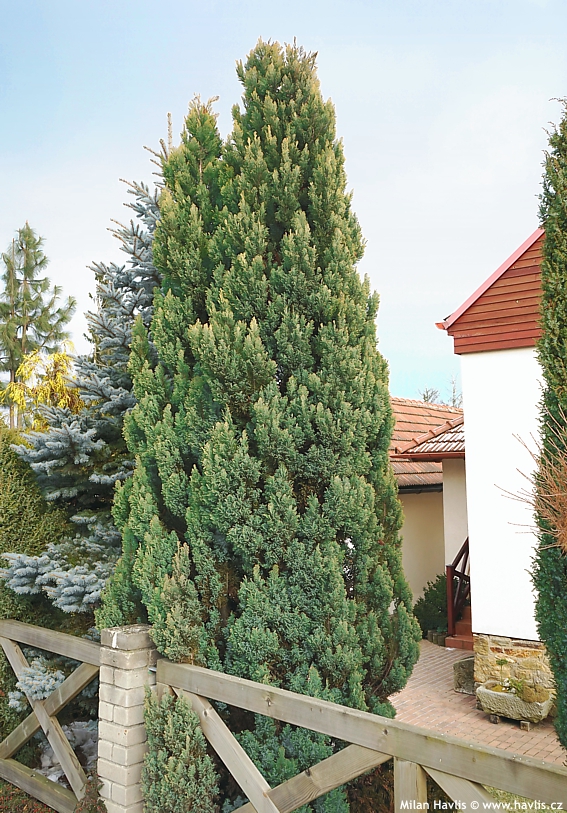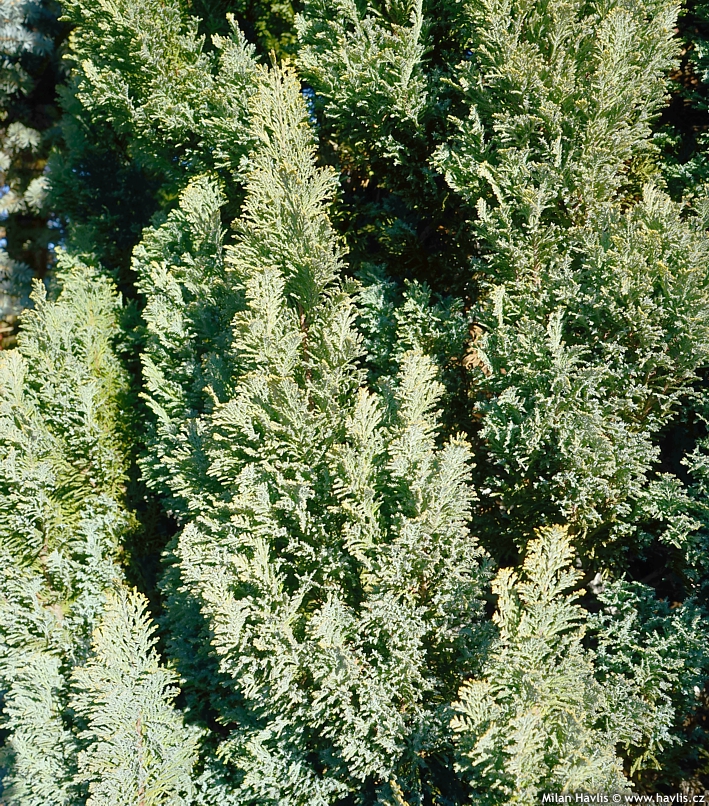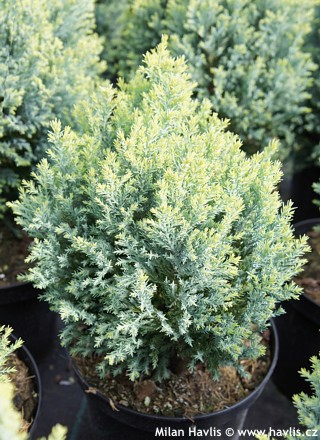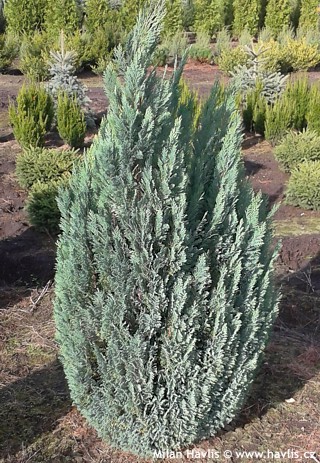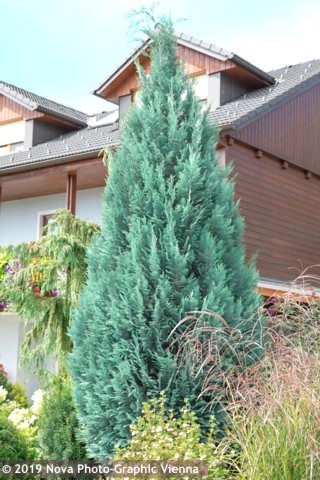Chamaecyparis lawsoniana 'WHITE SPOT' Lawson cypress
Chamaecyparis
Lawson cypress is native to northwestern America, from Oregon to northern California. It was first discovered by European Americans near Port Orford, Oregon, and was introduced to horticultural market in 1854. It was described by the Scottish botanist Andrew Murray (1812-1878) and named after another Scottish botanist and merchant, Charles Lawson (1795-1873), who became famous by importing new plant species from America to Britain. This cypress tree was one of his discoveries. It is a hardy, evergreen conifer with soft, scale-like needles. Perhaps all over the world in temperate climates, it is widely planted in gardens and parks and is popular for its variability. There are many colourful varieties that brighten up compositions of dark green shrubs and trees and perform also in decorative outdoor containers.
White Spot is a Lawson cypress variety found as a mutation of Monumentalis Nova variety in D.T.Poulsen Nursery, Denmark, in 1943. It boasts pale blue-green, scale-like needles with subtle white marbling which looks like glitter. It is more conspicuous in winter when much of plant’s chlorophyl is hidden in the roots. Also, from autumn till spring the branch tips reveal their butter yellow colour which changes to white as the new growths emerge in spring.
The plant grows moderately when young (20-30 cm per year), and slows down when about 1.5-2 m tall, forming handsome towers at tops of its numerous terminals. It naturally forms a dense and impenetrable shrub of strictly columnar habit which does not require pruning to look good. Still pruning of any kind is possible from early spring till midsummer. Just don't cut into old wood.
False cypress prefers moist but well-drained, slightly acidic soil but is adaptable to almost all types of soil. Grow it in full sun or half shade either in a garden bed or in a container where moisture must be regularly checked but remove the saucer (it requires more frequent watering than e.g. pine tree). Fully hardy to min. -29°C (USDA zone 5).
Last update 14-11-2020

































